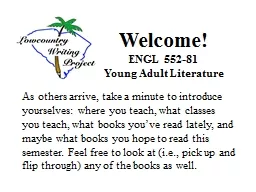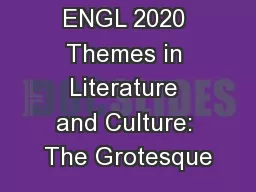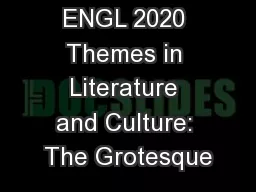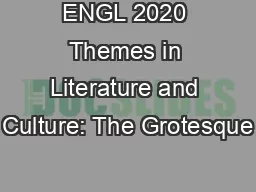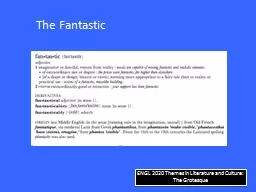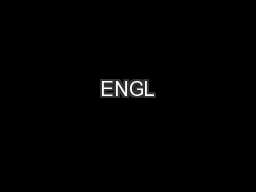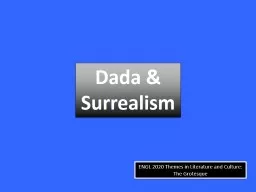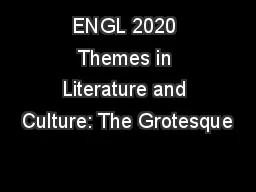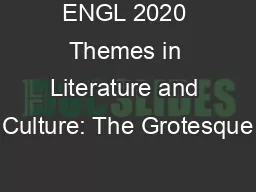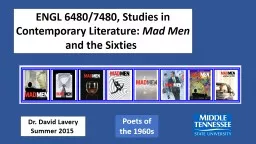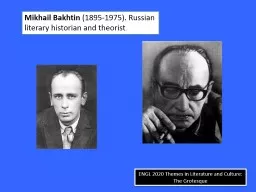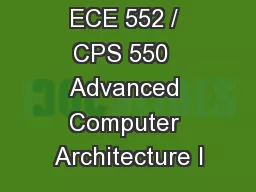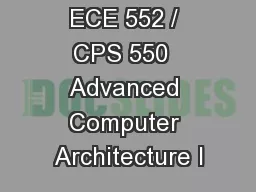PPT-Welcome! ENGL 552-81 Young Adult Literature
Author : tawny-fly | Published Date : 2018-11-07
As others arrive take a minute to introduce yourselves where you teach what classes you teach what books youve read lately and maybe what books you hope to read
Presentation Embed Code
Download Presentation
Download Presentation The PPT/PDF document "Welcome! ENGL 552-81 Young Adult Literat..." is the property of its rightful owner. Permission is granted to download and print the materials on this website for personal, non-commercial use only, and to display it on your personal computer provided you do not modify the materials and that you retain all copyright notices contained in the materials. By downloading content from our website, you accept the terms of this agreement.
Welcome! ENGL 552-81 Young Adult Literature: Transcript
Download Rules Of Document
"Welcome! ENGL 552-81 Young Adult Literature"The content belongs to its owner. You may download and print it for personal use, without modification, and keep all copyright notices. By downloading, you agree to these terms.
Related Documents

